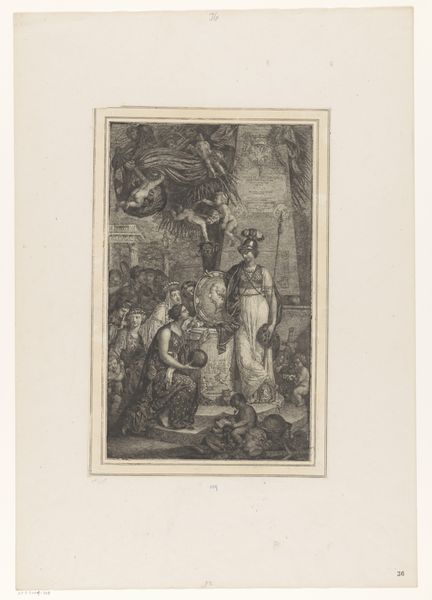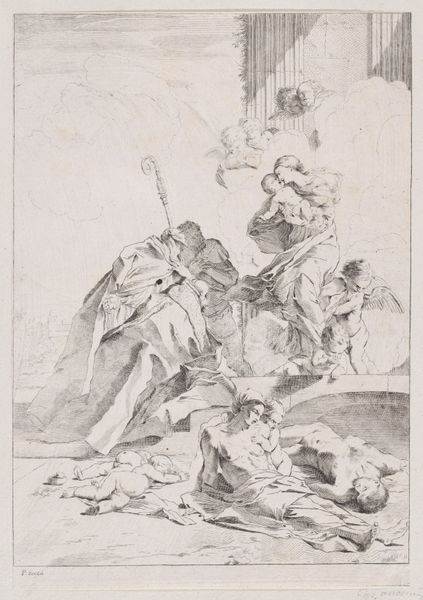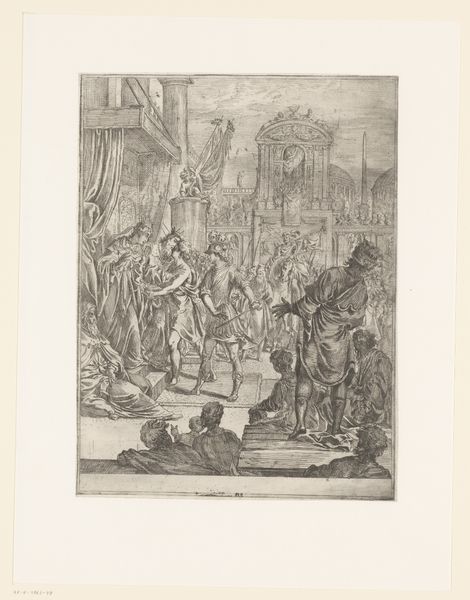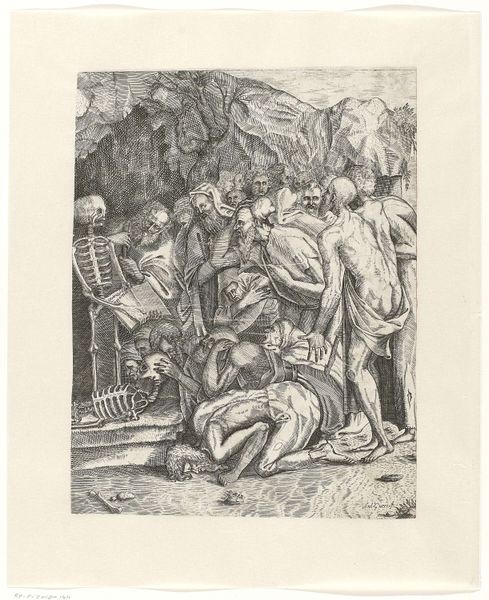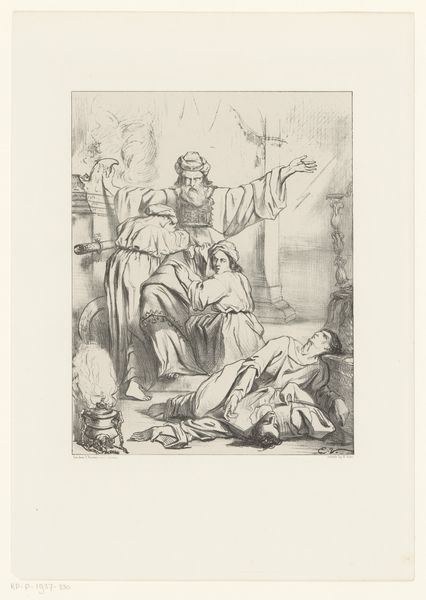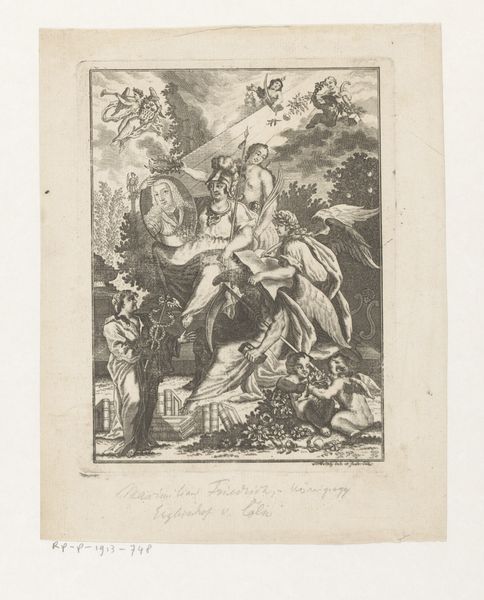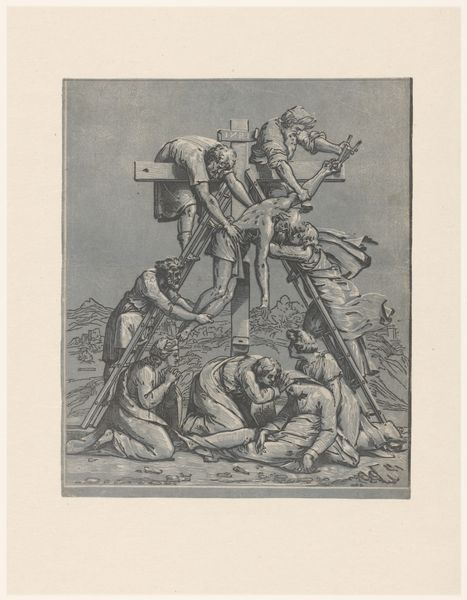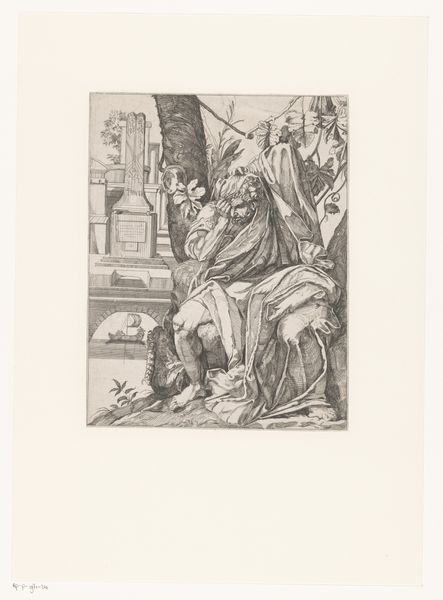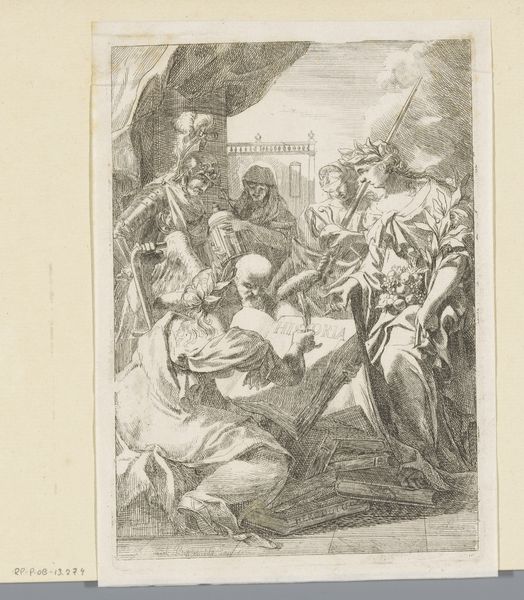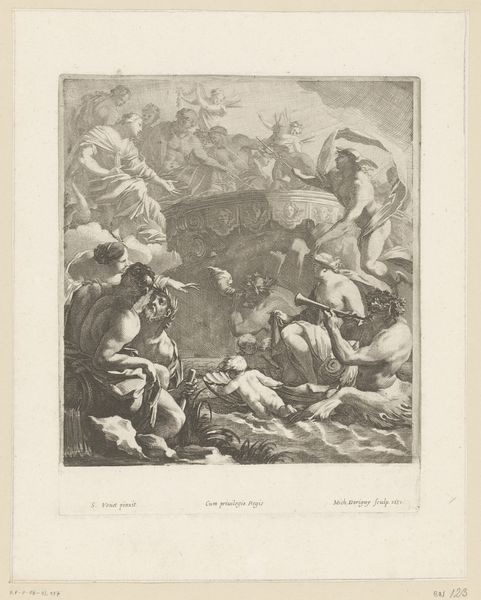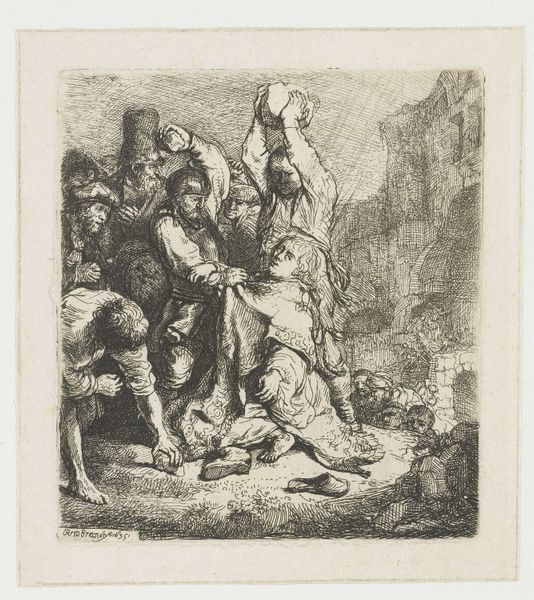
drawing, print, engraving
#
drawing
# print
#
landscape
#
figuration
#
men
#
history-painting
#
academic-art
#
sketchbook art
#
engraving
Dimensions: Plate: 11 7/8 × 8 3/8 in. (30.1 × 21.2 cm) Sheet: 15 3/16 × 11 9/16 in. (38.5 × 29.4 cm)
Copyright: Public Domain
Giovanni David created this engraving, "The Righteous Man," sometime in the late 18th century. David, who was from Genoa, Italy, evokes familiar themes of Neoclassical art but through a highly personal lens. Here, amidst meticulously rendered ruins, we see a man, perhaps a philosopher or poet, in contemplation. The crumbling architecture is not merely a backdrop, but a commentary on the transience of human achievement. Italy at this time, though a treasure trove of artistic heritage, was politically fragmented and economically strained, ruled by various foreign powers and the Catholic Church. David's choice to depict ruins could be a reflection on Italy's fading glory and a call for moral and intellectual renewal. The "righteous man" embodies virtue and integrity, standing in stark contrast to a society possibly seen as decadent or corrupt. The use of engraving, a medium often associated with dissemination of knowledge, further suggests the artist's desire to engage with the social issues of his time. To understand David’s "Righteous Man" more fully, one might consult historical texts about the political situation in Italy or studies of the Neoclassical movement.
Comments
No comments
Be the first to comment and join the conversation on the ultimate creative platform.
